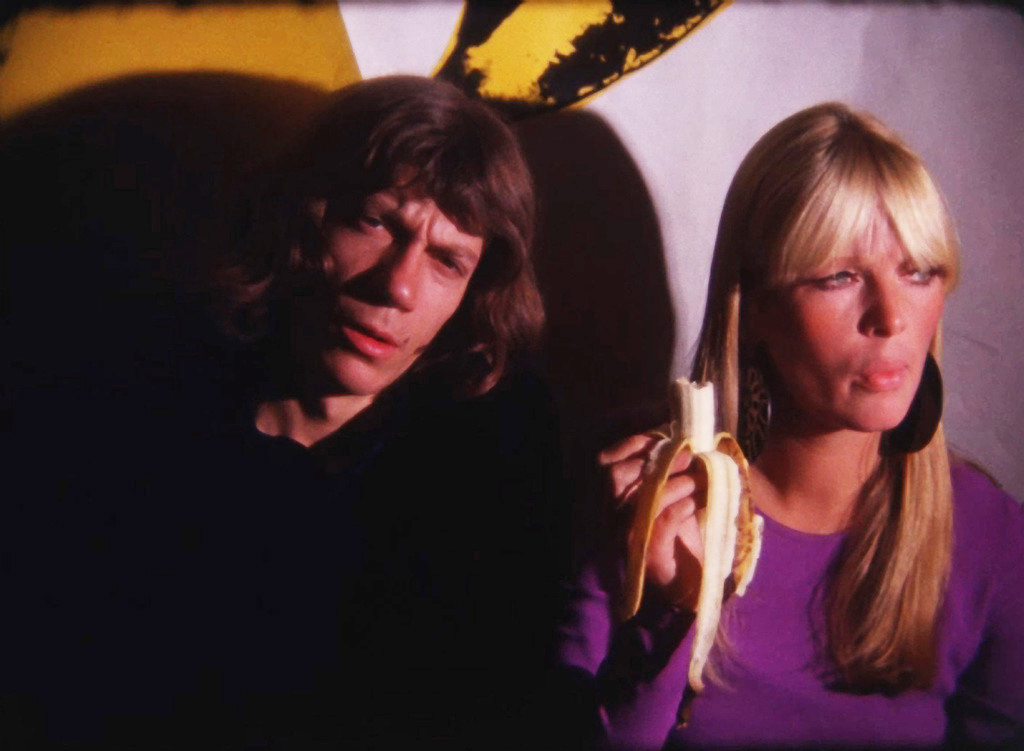UCLA CAP to celebrate Andy Warhol with film, live music

Co-comissioned by the Center for the Art of Performance at UCLA, “Exposed: Songs for Unseen Warhol Films” will feature 15 publicly unseen Andy Warhol films, including the 1966 “Color Film of Antoine and Nico.”
(The Andy Warhol Museum)
By Ian Colvin
Oct. 24, 2014 12:05 a.m.
At the height of Andy Warhol’s fame in the late 1960s, artists, poets and musicians crowded his New York City studio space, called “The Factory.” In a haze of smoke, rock groups like the Velvet Underground played as 16 mm films made by Warhol and his peers were projected onto screens. It was a dizzying mixture of sight and sound, of cinema and music tied inextricably together.
“Exposed: Songs for Unseen Warhol Films,” a one-night event at Royce Hall on Friday, gives the closest estimation to what that experience must have been like. Co-commissioned by the Andy Warhol Museum in Pittsburgh, Center for the Art of Performance at UCLA and the Brooklyn Academy of Music, the show features 15 of Warhol’s 16 mm films. They will also be accompanied by live performances from five musicians: Galaxie 500’s Dean Wareham, Television’s Tom Verlaine, Suicide’s Martin Rev, Eleanor Friedberger and Deerhunter’s Bradford Cox.
Though Andy Warhol is most known for his various works within pop art, he was also a prolific filmmaker. After buying his first camera in 1963, Warhol made a variety of underground movies, such as the 1966 cult classic “Chelsea Girls” and “Empire,” an eight-hour film made in 1964 that consists of a single static shot of the Empire State Building.
The selections, however, have never been publicly exhibited. Geralyn Huxley, curator of Film and Video at the Andy Warhol Museum, took part in the process of selecting the films for the event. The search involved poring over more than 125 Warhol movies, many of them neither labeled nor screened, available at the preservation center of the Museum of Modern Art in New York City.
“When choosing these films, the most important thing to consider was whether the films were visually striking and significant in some way to both his filmmaking and career overall as an artist,” Huxley said.
Just as Warhol’s paintings recontextualize consumerist advertisements by placing them within an art museum, his films often fuse together notions of “high art” and “low art,” oscillating between stuffy intellectualism and vulgarity, as in his controversial and aptly titled 1964 film “Blow Job.”
The films selected for this event similarly emphasize this dichotomy, as the variety of films range from short video portraits of art scene icons like Warhol darling Edie Sedgwick and folk singer Donovan to excerpts of longer projects, such as “Batman Dracula,” which was made in 1964 without permission from DC Comics.
“These movies almost seemed intentioned for musical accompaniment,” said Ben Harrison, curator of performing arts at the Andy Warhol Museum. “The idea became to give the films a clean cinematic presentation by bringing musicians in to play music live.”
Although the musicians involved work within a variety of different genres – from punk music to indie rock – a single commonality exists between them: All of them wanted to play in a show that features the work of a man still considered today to be one of the most important artists of the 20th century.
“It’s a testament to the unwavering relevance of Warhol that when these artists were approached to do this, they immediately wanted to be involved,” Harrison said.
Wareham personally selected the other four musicians and assigned each three short films with which to play their music. The resulting dynamic displays musicians from different generations coming together in celebration of an artist who died almost 30 years ago.
Nitzan Barlev, a first-year environmental science student, believes the idea of contrasting these newer groups with these older films brings the art and influence of Andy Warhol full circle, effectively highlighting his importance in the 21st century.
“I really like the idea of having these more contemporary musicians interact with this past art history,” Barlev said. “It really proves just how timeless Warhol is, how important his rich body of work continues to be, that an event like this is happening.”


